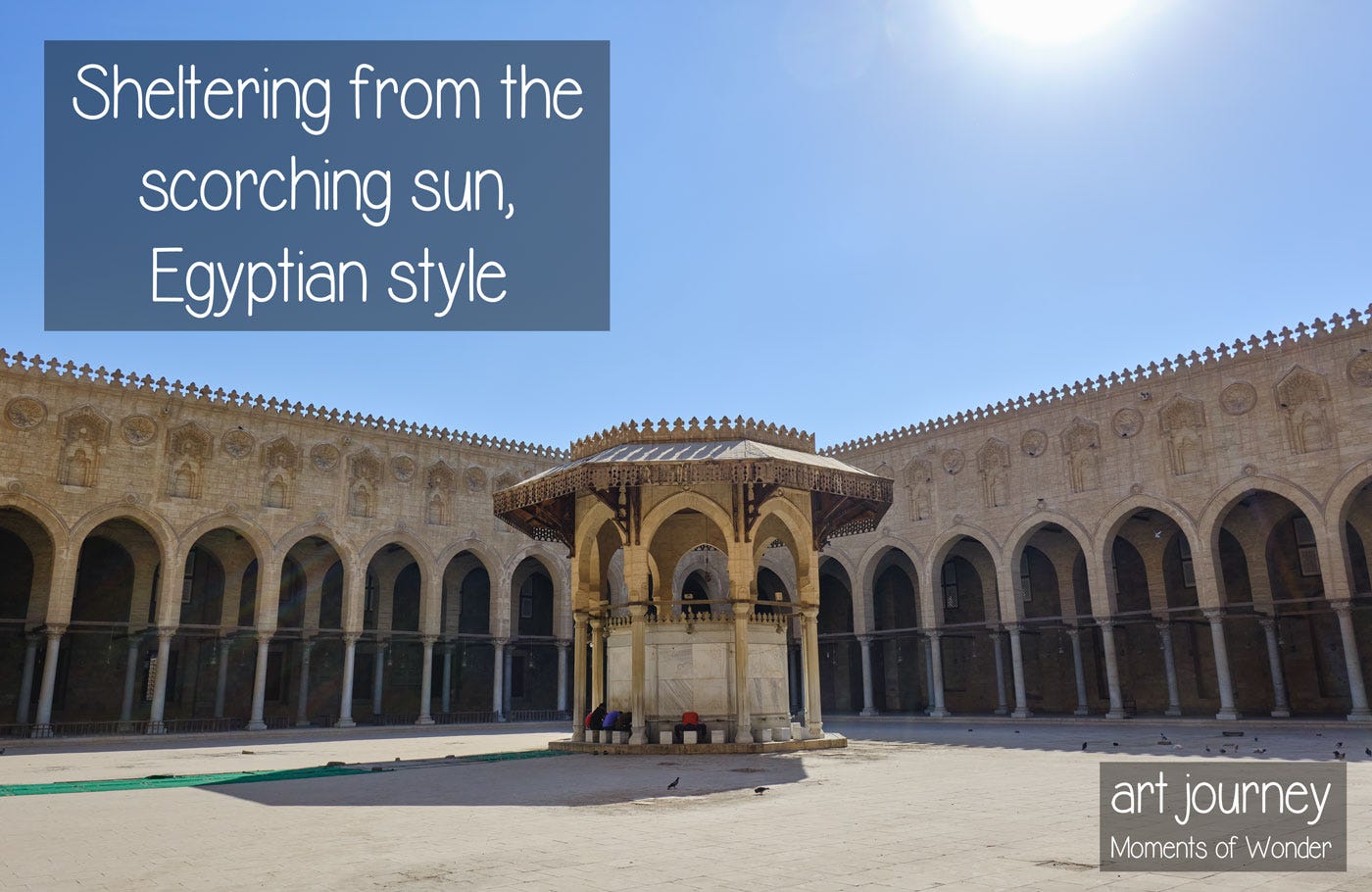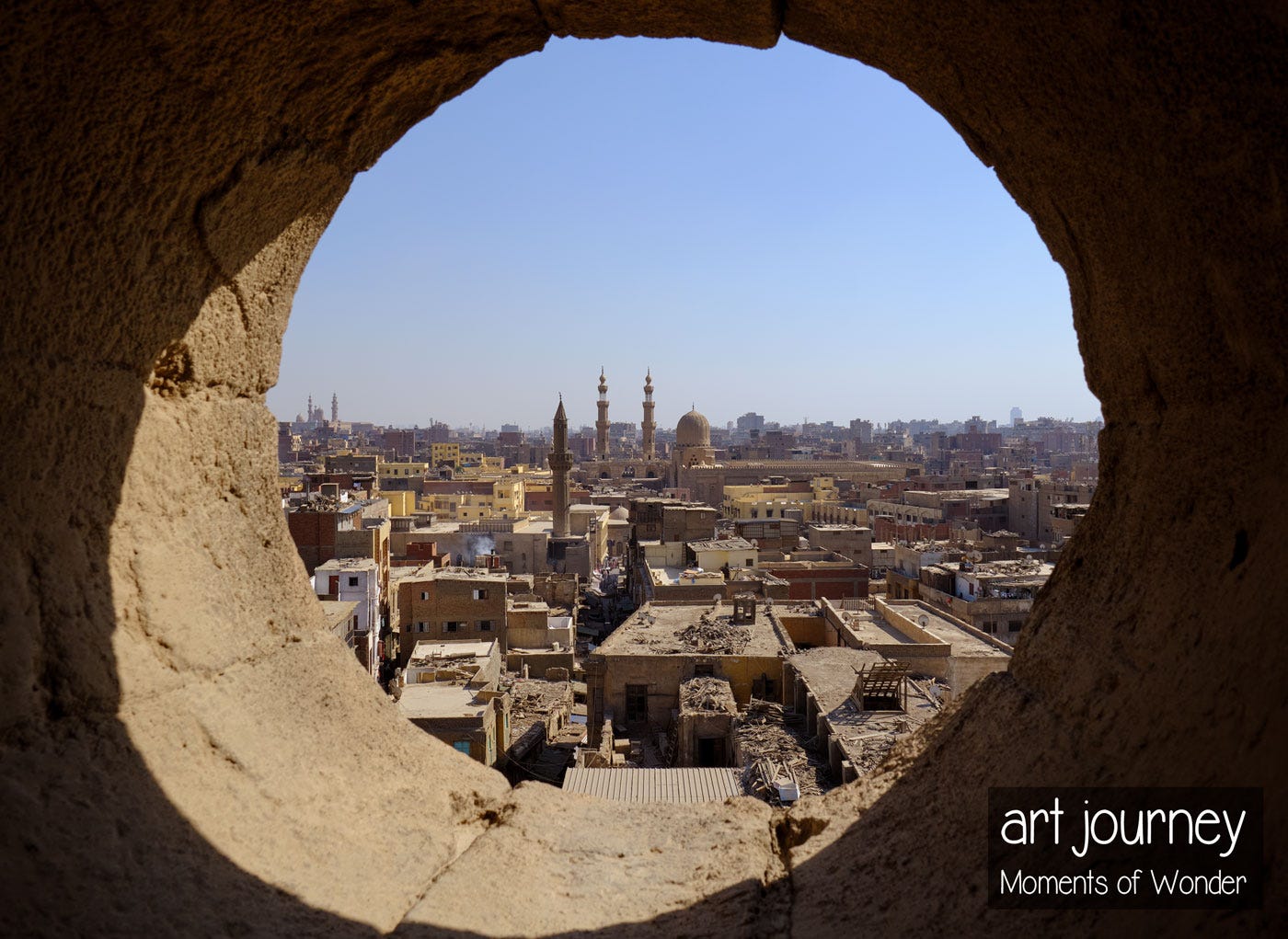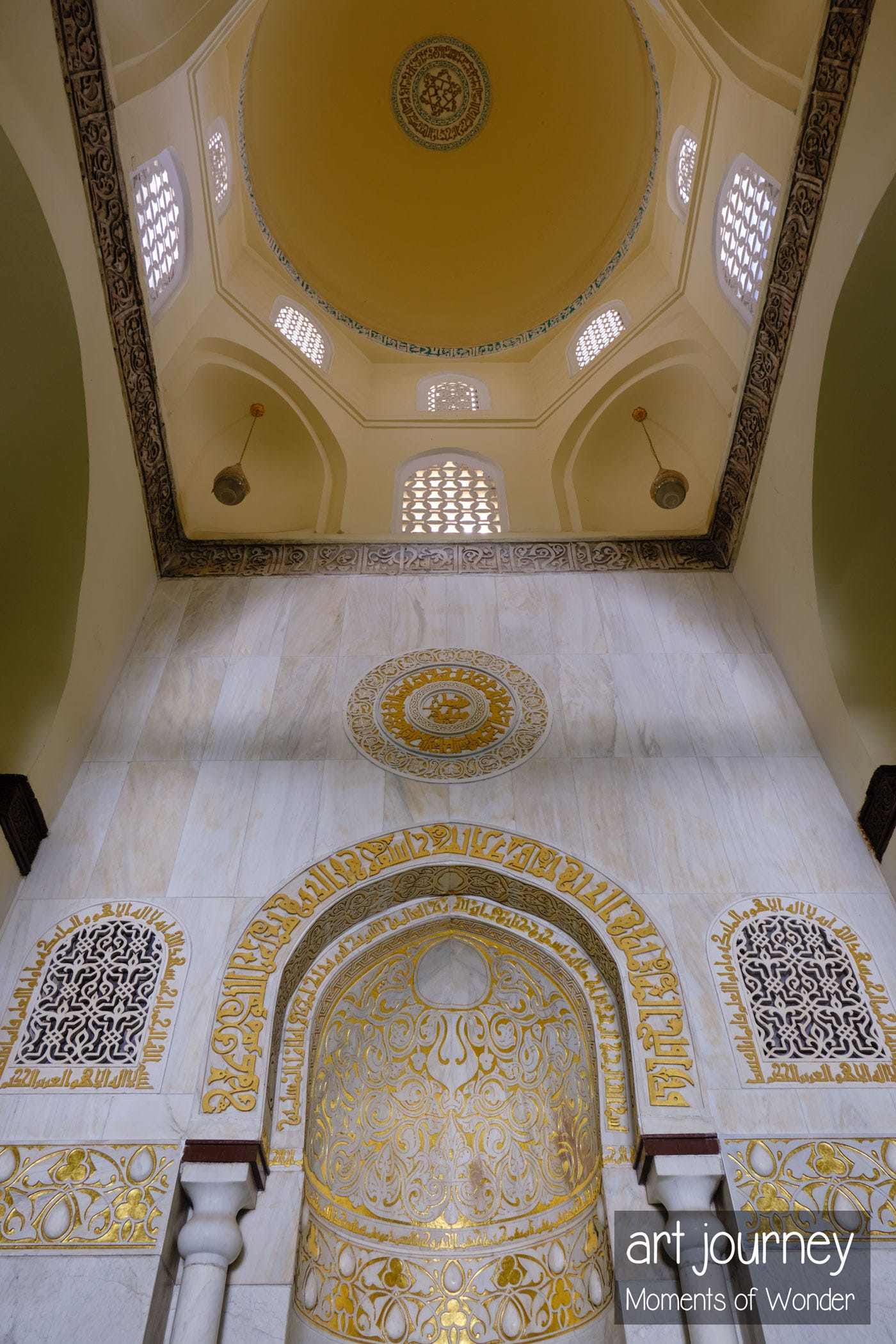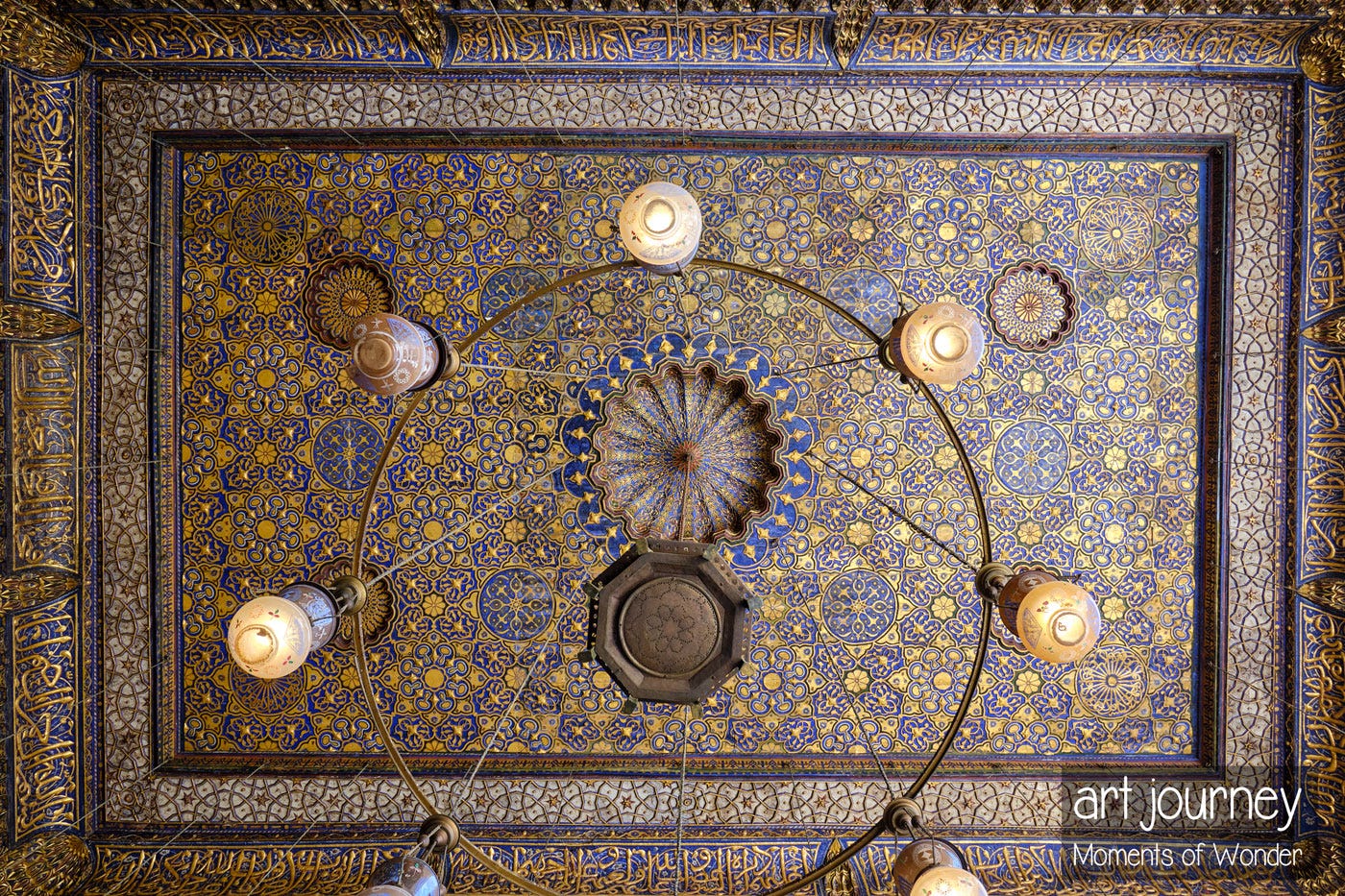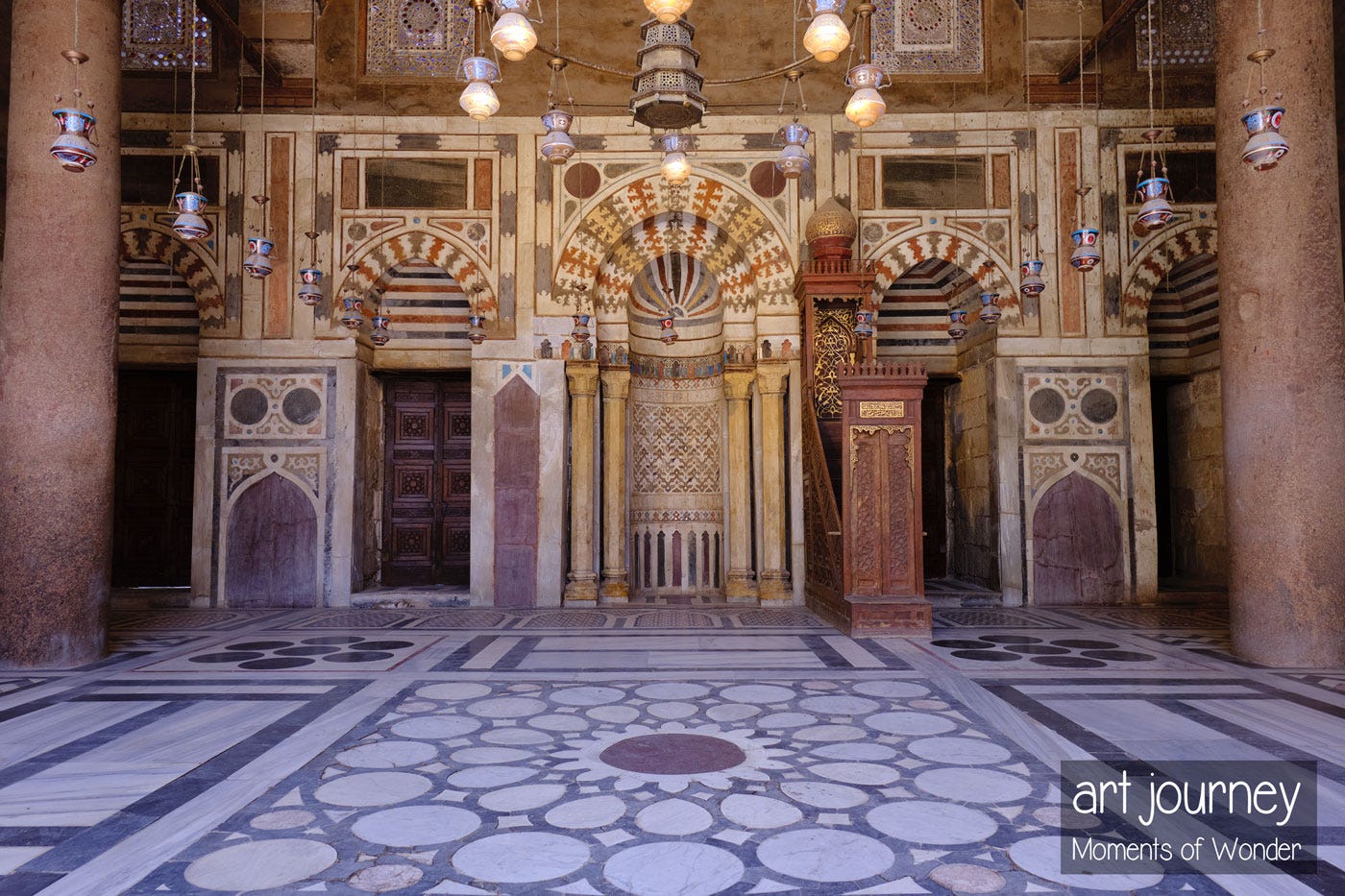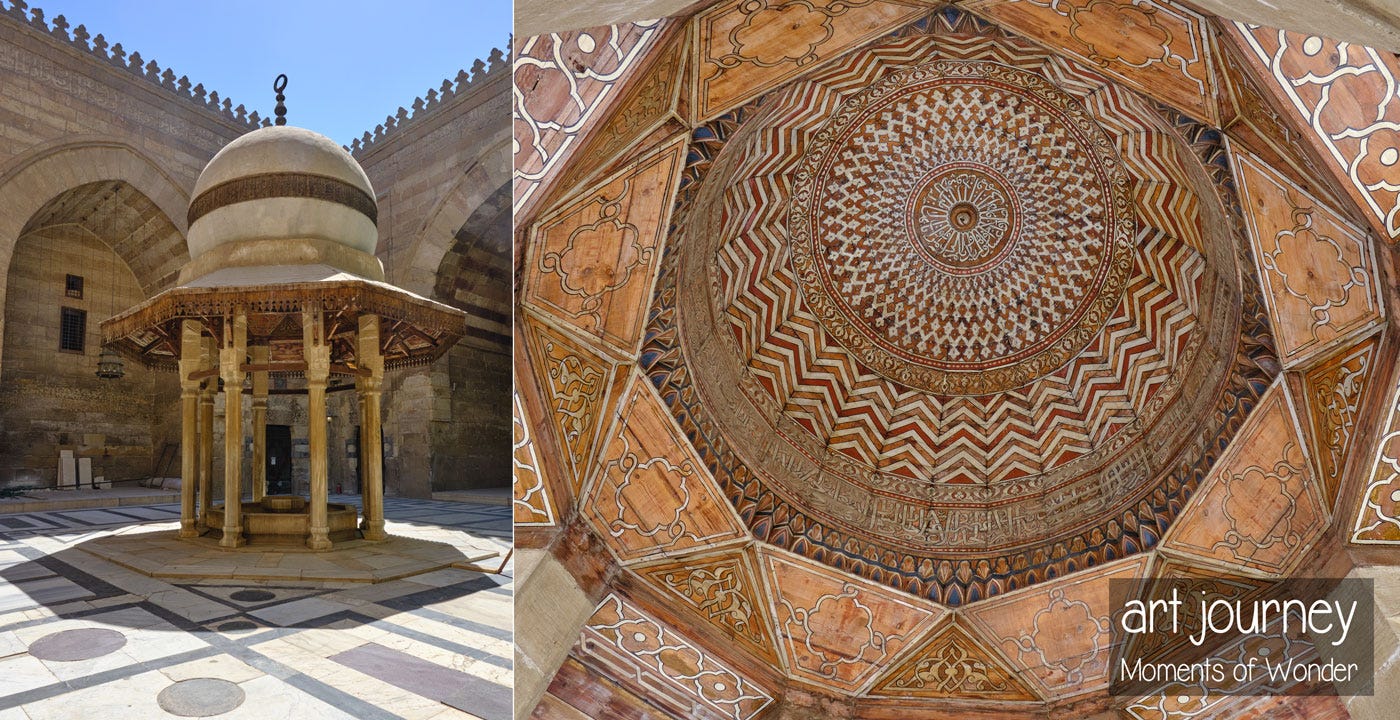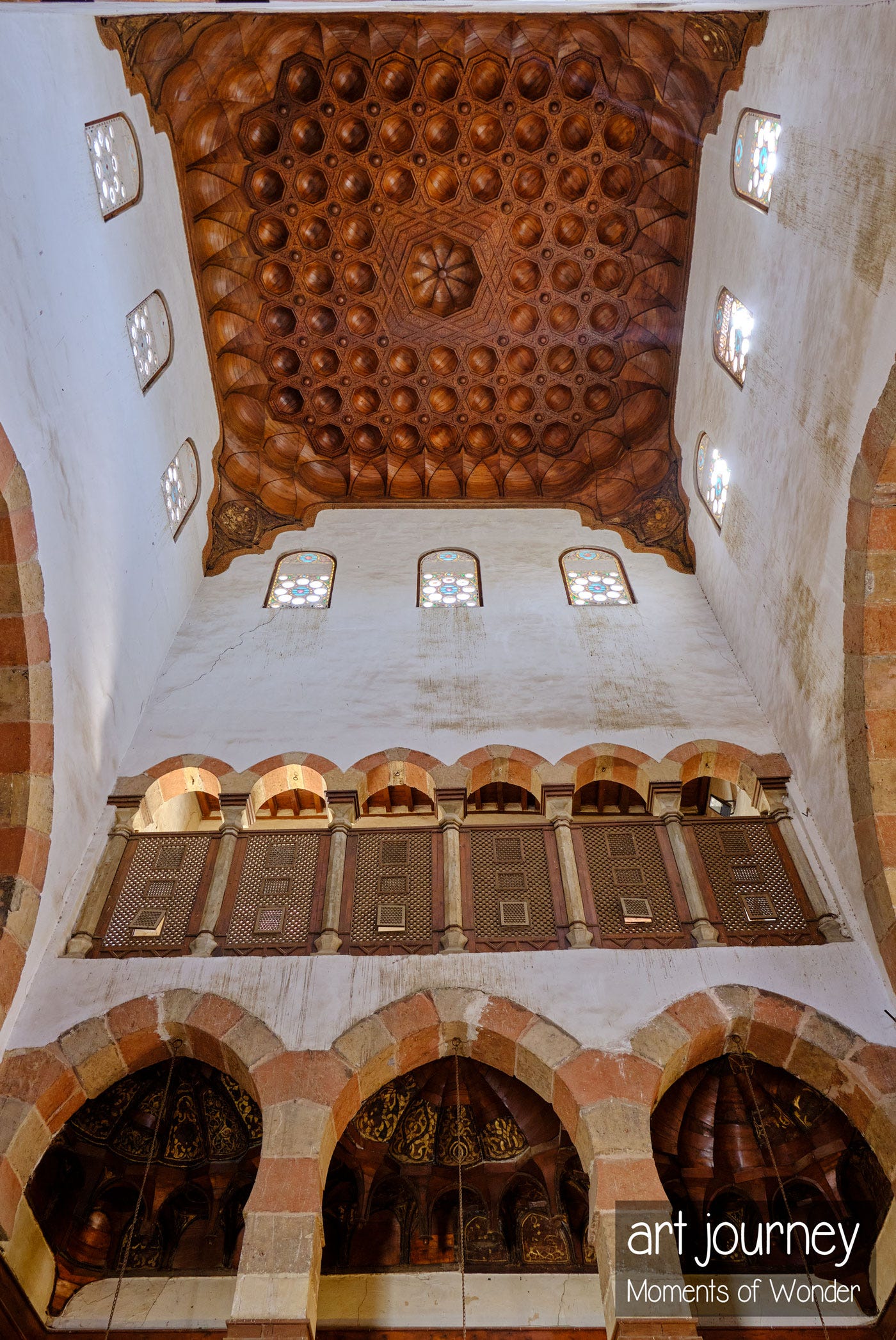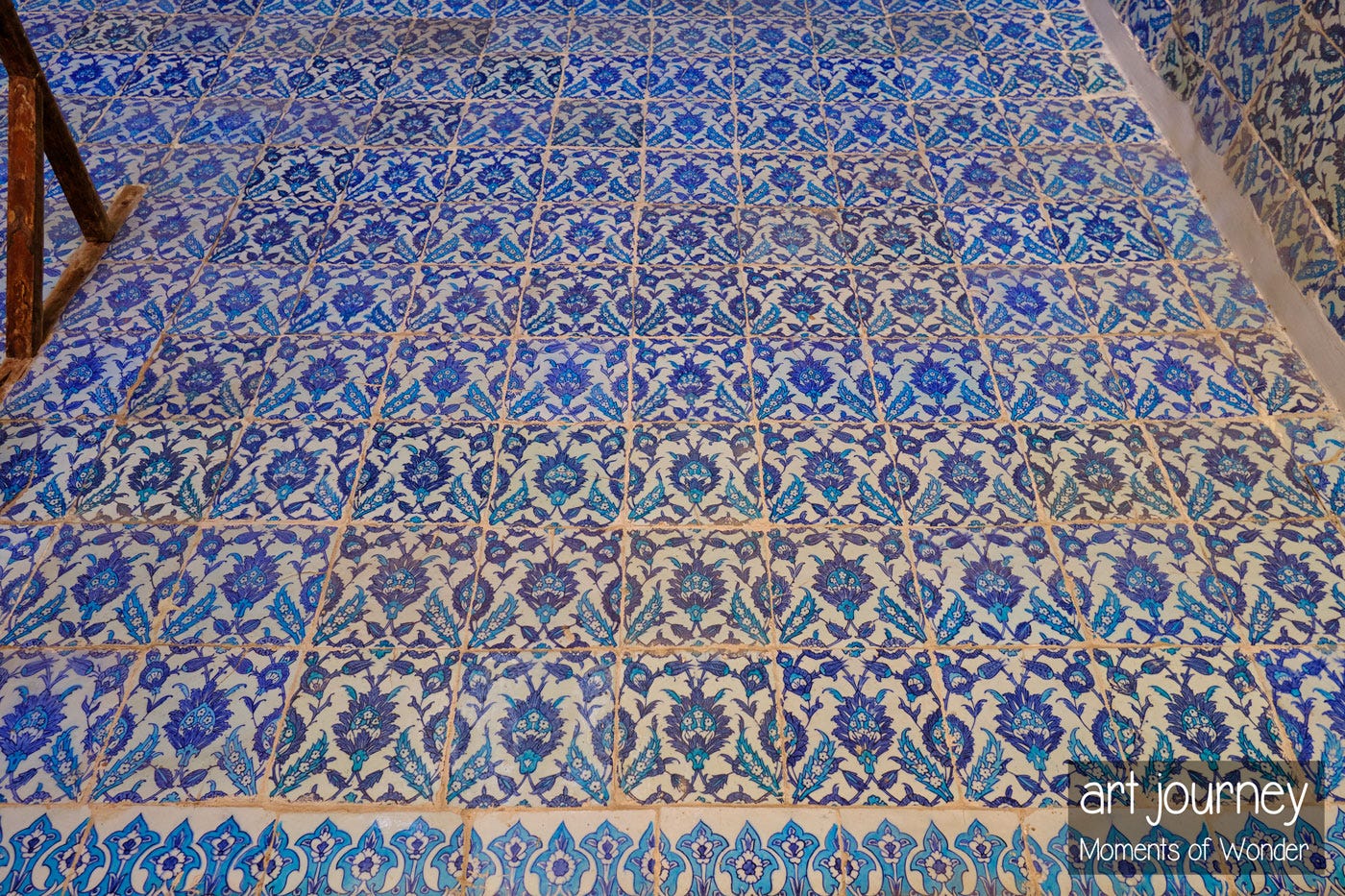Sheltering from the scorching sun, Egyptian style.
Wandering through time in search of cool in Old Cairo.
Dear reader, your intrepid art historian has already visited cathedrals, castles, and museums to share with you Moments of Wonder.
This time, he reports from Egypt, for good measure, at the hottest time of the year. The last two stories were attempts at time travel, a stroll in search of the Lighthouse and the Great Library of Alexandria.
As you are probably boiling while reading this, it is a good time for a different kind of Wonder. This is an attempt to bring fresh air your way, with a two-part photographic essay that wanders through Old Cairo in search of shade and cool air.
Part one is finding shade inside mosques, hammams, and palaces. Part two will be about Cairo's hidden wonder, a purpose-built house designed to cool its inhabitants.
Roasting under the Egyptian sun
To get a sense of how hot it is here in July, for the first time in my life, my camera gave me overheating warnings. I was forced to find shade and air conditioning to prevent my precious toy from melting in my hands.
Uploading this story was also a challenge, as Wi-Fi and 4G internet stopped working due to a major telecom center burning down. Yet, if the ancient Egyptians could build pyramids without the internet, as well as without the aid of aliens, I could survive being offline for a couple of days.
And it was not even that hot, only about 40 °C—105°F—but it felt like standing in front of an open stove. Considering that Egypt is situated in the Sahara, the world's largest desert, it is not entirely surprising.
If you venture on the West Bank of the Nile and get lost, bad news: there are 3,000 miles of hot sand to cross before you make it to the Atlantic Ocean.
This serves as a reminder that the ancient Egyptians did not invent the practice of mummification. The idea was not born out of religious concepts, but as a result of Egypt's climate. Burrying the dead in dry, hot sand prompted the realization there was an afterlife, which became a central tenet of the religion.
Another way to make sense of it is to imagine that there were buses in Pharaonic Egypt, and a man waited for that bus on a bench at the height of summer, at midday. Unfortunately, the bus never came, and the man would be a celebrity today, known as the 'seated mummy'.
Walking through the City of a Thousand Minarets in search of shade
Both the architects of Pharaonic times and those under Muslim dynasties had their solutions to the problem. Here, we explore Old Cairo in search of monuments that offer shade, including mosques, palaces, and hammams.
It is also a good excuse to admire the architecture and the clever solutions to produce cool in the scorching heat. As you can see above, the search included climbing minarets for a wide view of Old Cairo. Spare a thought, dear reader, for your valiant art historian who climbed up and down narrow staircases in sweltering heat.
One obvious port of call was to go to the hammams.
Sweating and cooling in the hammam, the steam baths
The hammam is an evolution of the Roman bath. Few ancient hammams survive; the one above is what remains of a public bath, and the one below is the dome of a private one, from the wonder that will come in the following story.
High ceilings and domes galore
As the heat rises, the simplest architectural trick is to help the warmth escape, thanks to high ceilings. Here is a selection of wonderful domes and ceilings.
These two photos are details from what is regarded as one of ancient Cairo's most important monuments, the mausoleum of Sultan Qalawun, built around 1300.
To many, it is second only to the Taj Mahal in terms of the most beautiful mausoleum in the Muslim world.
Next door, the Sultan Barquq complex, dating from the 1330s:
Below, on the left, is the fountain for ablutions, and the dome you see while getting refreshed.
Ancient Cairo’s Palatial rooms
Guidebooks tell you that ancient Cairo, Khan el Khalili, is a bazaar. It is indeed, but it is way more important than that. Most of Old Cairo is, in fact, the former quarter of the caliphs, the rulers of Egypt. That is why the area is a Unesco World Heritage site.
Historic Cairo’s architecture has been known variously to scholars, historians and residents as the “City of a Thousand and One Nights” and “City of a Thousand Minarets”.
The city preserves half of the surviving monuments from the Middle Ages to date. The great monuments of Historic Cairo are a unique ensemble of architectural and artistic masterpieces which stand tall in the sky of Cairo.
Each of them expresses rare artistic, aesthetic and architectural value, which might be enough for each to be considered as of outstanding global importance in the history of art and architecture in the world.
That explains why I was getting overwhelmed, and my brain was about to overheat, like the camera. It was tempting to do like the guys below and lie down for a nap.
But I resisted the urge, as there was another hidden marvel to see, which you will discover in the second part of the story.
I trust, dear reader, that this little stroll through Old Cairo in search of shade brought you a Moment of Wonder.





